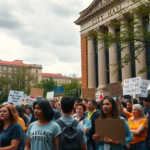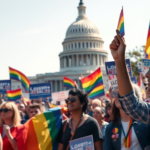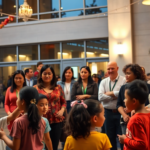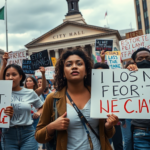The Journalistic Diversity Problem: How is The Phoenix Responsible?
In recent discussions surrounding media representation, the focus has turned to student journalism, with The Loyola Phoenix finding itself under scrutiny for its lack of diversity. Despite being a multi-section publication featuring News, Opinion, Arts, Sports, Crossword, Horoscope, and Podcast, The Phoenix has faced criticism for not adequately reflecting the diverse community it aims to serve.
Editor’s Call for Change
A critical editorial by Avaya Hall has highlighted this issue, drawing attention to the predominantly white editorial staff at The Phoenix. Hall’s piece underscores a pressing need for transformation within the publication, aiming to align more closely with the diversity seen across Loyola University. In doing so, Hall joins a broader conversation already acknowledged by 52% of journalists in a Pew Research Center study, who admit to diversity shortcomings in their organizations.
Background and Industry Context
The need for diversity in newsrooms is not a new issue. Historically, the American Society of News Editors set a “Goal 2000” initiative to achieve newsroom diversity by the year 2000—an aspiration still unmet two decades later. Nationally, approximately 76% of journalists identify as white, reflecting a narrow band of perspectives in an otherwise multicultural society.
This lack of representation can have tangible consequences. Studies show that up to 80% of Black adults have encountered racist or insensitive content in news publications, compounded by a 2024 report revealing that nearly 87% of Black Americans express distrust in media due to misrepresentations and omissions.
Impact on The Loyola Community
The local impact of these findings resonates deeply with Loyola’s student body. When newsrooms like The Phoenix lag in diversity, they risk producing coverage that may overlook or misrepresent marginalized communities, thereby straining trust and credibility among readers. This is crucial in an academic environment where representation and inclusion are highly valued.
As Jessica Hernandez, president of Loyola’s Black Student Experience organization, points out, “The stories told in our student newspaper should reflect the breadth of experiences on campus. It’s not about assigning blame but understanding the repercussions of not seeing ourselves in the stories being told.”
Previous Advocacy and Ongoing Challenges
Loyola University itself has a mixed record on diversity and inclusion initiatives, with various student groups continuously advocating for increased representation across faculties and student organizations. These efforts have paved the way for ongoing dialogue, yet the challenges remain.
“The Phoenix’s predicament is just a smaller-scale reflection of a national issue,” comments Dr. Richard Lee, a sociology professor at Loyola. “National conversations about media diversity trickle down into our local institutions, impacting everything from curriculum development to faculty hires.”
Recommendations for Progress
The Phoenix has been urged to take tangible steps toward enhancing its diversity by establishing a dedicated diversity board, forming partnerships with diverse student organizations, and broadening outreach strategies to include a wider pool of aspiring journalists. By doing so, The Phoenix could transform into a more inclusive platform for storytelling that represents all of Loyola University.
Looking ahead, the implications of such a shift could be profound. Not only would a diversity-focused approach improve journalistic practices, but it could also enhance The Phoenix’s readership and relevance. Dr. Anna Kim, a media studies expert, asserts, “By prioritizing diversity, The Phoenix not only enriches its stories but also fosters trust and engagement within the community.”
Balancing Perspectives
While the call for diversity is clear, it’s essential to address the various perspectives involved. Critics might argue that focusing too narrowly on diversity could compromise editorial quality or lead to tokenism. Nevertheless, it’s critical to find a balance that honors both the integrity of journalism and the imperative for inclusivity.
Local Resources and Engagement
For community members interested in this subject, and particularly those connected with Loyola, there are resources and forums to discuss The Phoenix’s future. Student groups like the Latinx Student Association and Asian American Pacific Islander groups provide platforms for continued dialogue and collaboration.
In conclusion, as The Phoenix navigates these challenges, it serves as a microcosm of the broader movement toward equitable representation in journalism. By embracing its responsibility to reflect Loyola’s rich diversity, The Phoenix stands at the cusp of fostering a more inclusive and trusted journalistic environment. Through collaboration and committed change, it can become a beacon for media representation within educational institutions.







